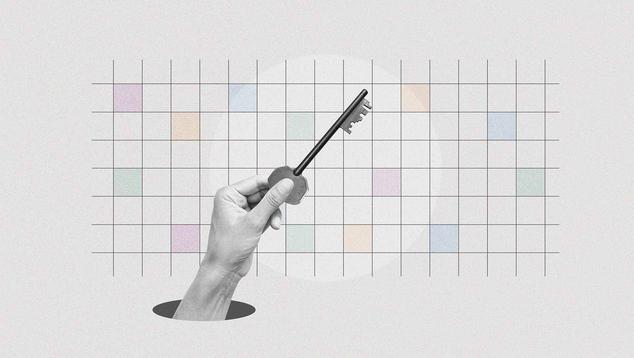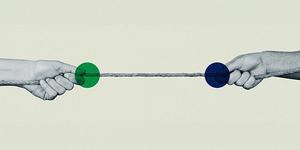Claire, regional sales director at a large financial services firm, was frustrated with her sales management team’s performance. New competitors with innovative sales and pricing strategies were seizing market share. Claire’s previously high-performing team seemed powerless to counter these challenges.
Claire spoke with a peer who suggested that the problem might be low trust within the team, possibly making members uncomfortable about voicing their opinions and sharing ideas. Claire began to wonder why trust had eroded and how to rebuild it within the team and in herself as a leader.
Leadership teams face constant pressure to adapt quickly and solve complex problems. Yet they often miss an important resource: their own collective strengths. When senior leaders understand each other’s talents, work together with purpose, and build trust, they are far more likely to make lasting, meaningful changes.
Leadership teams often have strong individual leaders who struggle to work effectively as a unit. When leadership styles go unrecognized or unmanaged, they can just as easily create friction as foster collaboration.
Top-performing leadership teams don’t just rely on great individual talent — they know how to combine and harness it. That starts with understanding the team’s full makeup.
Gallup’s CliftonStrengths Team Grid provides a visual summary of a team’s DNA: how members think, influence, process information, make decisions, and take action. It enables leaders to match each team member’s dominant strengths with specific tasks or projects where they will do their best work.
It also encourages collaboration by highlighting complementary partnerships between team members. Gallup has found that collaboration between individuals with different yet complementary strengths can lead to superior results because each person brings out the best in the other. Partners with complementary strengths also help each other stay focused on goals and make faster, better decisions.

Based on each leader’s CliftonStrengths profile, the team grid groups their strengths into four domains:

Many Strategic Thinking themes predispose this team to successfully absorb information and make smart decisions.

With few Relationship Building themes, this team may struggle to form a strong, cohesive unit and should intentionally harness Executing and Strategic Thinking themes to compensate for its weakness in this domain.

While this team can influence others when necessary, speaking up and selling its ideas won’t come naturally. Leaders may need to intentionally elevate voices or assign advocacy roles when broader influence is needed.

Leading with Executing themes, this team will have a well-earned reputation for getting things done.
Leaders can quickly see the team’s combined strengths across the four domains. This inspires constructive team conversations: In which domain are our strengths most concentrated? In which domain are our blind spots? How can we work together to maximize our strengths and address areas where we fall short?
Using the Grid to Prioritize What Matters Most
1. Improve Collaboration in the Workplace
The grid helps identify natural collaborators such as those who are strong in Relationship Building themes (e.g., Includer, Relator). But it also connects people with contrasting yet compatible strengths across domains. Each executive brings their distinct leadership style and contributes their best thinking to move forward.
For example, eBay founder Pierre Omidyar and company president Jeffrey Skoll succeeded by combining their complementary strengths. Omidyar excelled at building relationships, expanding eBay’s network of buyers and sellers. Skoll was highly analytical and skilled at execution, enabling him to identify the most effective way to get things done.
When leaders work together based on each person’s strengths, they build trust faster and achieve stronger results.
2. Build Trust and Create Buy-In
Organizational change requires trust in leadership and a clear explanation of what is changing and why it is happening. Leaders with dominant Relationship Building themes, such as Empathy, Positivity, or Adaptability, tend to easily connect with others and build strong relationships. Those with strengths like Command or Communication take a more direct approach, directing energy toward achieving a goal and encouraging employees to take part in the change.
Together, these two types of leaders make it easier for employees to understand not only what is changing but also why it matters, making them more likely to believe in and support it.
3. Think Strategically and Act Decisively
Leaders strong in Strategic Thinking themes, such as Analytical, Ideation, or Futuristic, enable teams to see the broader context and long-term possibilities. Those with strong Strategic or Ideation strengths excel at generating creative solutions to overcome obstacles. Change is often messy, and leaders with the Restorative theme are especially good at identifying problems and bringing structure to complex situations.
These leaders excel at defining clear and compelling objectives and mapping out the steps to achieve them. When paired with leaders who have dominant Executing strengths, such as Achiever, Arranger, or Focus, they ensure that smart ideas turn into real progress.
The grid empowers teams to assign responsibilities based on what each person does best — not by titles — so each person can contribute where they’re most effective.
Claire’s Story Revisited: Building Team Trust
Claire brought her sales management team together for a half-day session to share and discuss their team grid. Most members had strengths in the Executing and Strategic Thinking domains. They excelled at getting things done and thinking creatively and strategically. But the team lacked strengths in the Relationship Building domain, which was weakening trust, limiting team cohesion and stifling collaboration and innovation.
To address this, Claire asked her team to reflect on five questions:
- How do our dominant domains make us highly productive as a team?
- How does our least dominant domain affect how we work together?
- How can we manage our least dominant domain?
- What strengths do you have that others on the team do not?
- How can your strengths support the team?
Claire’s goal was to encourage open conversation and mutual understanding of strengths and help team members see how their individual strengths could improve team collaboration, communication, and performance. The team grid provided everyone with a clearer view of how each person naturally thinks, feels, behaves, and what motivates them the most.
Over the next few weeks, Claire saw a noticeable shift in the team’s dynamics and energy. Members started meeting regularly to share ideas, brainstorm solutions, strategize and launch new sales initiatives and pricing models.
Weekly team meetings became more energetic and productive, with people bringing their latest ideas and actively contributing to campaigns aimed at winning new business and regaining market share.
More Than the Sum of Its Parts
When a leadership team knows its strengths and uses them with purpose, trust deepens, collaboration improves, and progress comes faster. The CliftonStrengths Team Grid is not just a tool for team building — it is a practical way to help teams work smarter together and accomplish more than they could alone.
Leaders who commit to recognizing and applying their team’s strengths gain something lasting: a more focused, connected and capable team. That’s an edge no competitor can easily match.
Build a leadership team that’s greater than the sum of its parts.
- Learn how the CliftonStrengths Team Grid helps teams collaborate and perform at their best.
- Explore global data on leadership and trends on employees’ trust in leadership, performance management practices, and more.
- Help leaders succeed by focusing on what they naturally do best with the CliftonStrengths for Leaders report.




